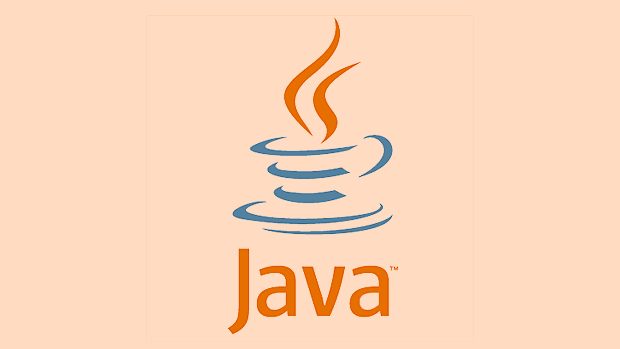The core points of using Java and Kafka to implement an event-driven architecture include: 1. Design a clear event model, use Avro Schema Registry to manage structure changes, unify naming specifications and include necessary information; 2. Set reliability parameters, asynchronous sending and log callbacks when building producers, and consumers use Group to achieve expansion, control offset submission and idempotence processing; 3. Use Kafka Streams to implement real-time processing logic, such as window aggregation statistics; 4. Design an error retry mechanism, catch exceptions and retry failure messages, and use DLQ to handle multiple failure events to improve system robustness.

When implementing event-driven architecture (EDA) using Java and Kafka, it is key to understand how event streams drive collaboration across parts of the system. As a distributed event streaming platform, Kafka is naturally suitable for building high-throughput and low-latency event-driven systems. The focus is on designing a good event model, consumer behavior, and system scalability and fault tolerance mechanisms.

Design a clear event model
Events are the core of EDA, and each event represents a fact that occurs in the system. When using Kafka, you must first define a clear event structure, such as using JSON or Avro format, and cooperate with Schema Registry to ensure the consistency of event formats.
- Recommended practices:
- Use Avro Schema Registry to manage event structure changes.
- Naming events with a unified style, such as
UserCreatedEventandOrderShippedEvent. - Each event should contain timestamps, event types, and necessary data.
The advantage of this is that it facilitates consumers to parse and process events, and can also reduce compatibility issues caused by format changes.

Best practices for building producers and consumers
Kafka producers and consumers are key players in the circulation of events. Java provides rich client APIs to implement them. The producer is responsible for publishing events to the specified Topics, while the consumer subscribes to these Topics and responds.
-
Producer's Notes:

- Reasonably set
acks,retriesand other parameters to ensure reliability. - Use asynchronous sending and adding callback logs to facilitate troubleshooting failures.
- Reasonably set
-
Consumer advice:
- Use Consumer Group to achieve scale-out.
- Turn on automatic submission of offsets but pay attention to the timing to avoid repeated consumption or loss.
- Idepotential control of message processing logic, such as recording processed IDs.
For example, when processing an order event, the order ID can be stored in Redis as an idempotent key to prevent duplicate processing.
Use Kafka Streams for real-time processing
Kafka Streams is a lightweight library that is very suitable for real-time event processing logic, such as filtering, aggregation, window computing, etc. It does not require additional deployment of stream processing clusters and runs directly in the application.
For example, if you need to count the number of user logins per minute, you can use Kafka Streams to define a window operation:
KStream<String, String> logins = builder.stream("user-login-events");
logins
.groupByKey()
.windowedBy(TimeWindows.of(Duration.ofMinutes(1)))
.count()
.toStream()
.foreach((key, value) -> System.out.println("Window: " key.window() ", Count: " value));This approach is lighter than introducing Flink or Spark Streaming, suitable for small and medium-sized real-time processing needs.
Error handling and retry mechanism
In event-driven systems, message processing failure is a common phenomenon. Kafka itself does not actively retry failed messages, so you need to design your own retry strategy, or use the Dead Letter Queue (DLQ) to handle multiple failed events.
- Suggested plan:
- Try several times after catching the exception on the consumer side.
- If retry fails, send the message to DLQ for processing separately.
- Check DLQ regularly using external tools such as Kafka Connect or custom scripts.
Such mechanisms can significantly improve the robustness of the system, especially in the face of occasional failures or temporary dependencies unavailable.
Basically that's it. Implementing an event-driven architecture with Java and Kafka is not complicated, but it is easy to ignore details, such as event structure design, consumer offset management, error handling, etc. As long as you lay a solid foundation around these core points, a stable and efficient event-driven system can be built.
The above is the detailed content of Implementing Event-Driven Architecture with Java Kafka. For more information, please follow other related articles on the PHP Chinese website!

Hot AI Tools

Undress AI Tool
Undress images for free

Undresser.AI Undress
AI-powered app for creating realistic nude photos

AI Clothes Remover
Online AI tool for removing clothes from photos.

Clothoff.io
AI clothes remover

Video Face Swap
Swap faces in any video effortlessly with our completely free AI face swap tool!

Hot Article

Hot Tools

Notepad++7.3.1
Easy-to-use and free code editor

SublimeText3 Chinese version
Chinese version, very easy to use

Zend Studio 13.0.1
Powerful PHP integrated development environment

Dreamweaver CS6
Visual web development tools

SublimeText3 Mac version
God-level code editing software (SublimeText3)
 Asynchronous Programming Techniques in Modern Java
Jul 07, 2025 am 02:24 AM
Asynchronous Programming Techniques in Modern Java
Jul 07, 2025 am 02:24 AM
Java supports asynchronous programming including the use of CompletableFuture, responsive streams (such as ProjectReactor), and virtual threads in Java19. 1.CompletableFuture improves code readability and maintenance through chain calls, and supports task orchestration and exception handling; 2. ProjectReactor provides Mono and Flux types to implement responsive programming, with backpressure mechanism and rich operators; 3. Virtual threads reduce concurrency costs, are suitable for I/O-intensive tasks, and are lighter and easier to expand than traditional platform threads. Each method has applicable scenarios, and appropriate tools should be selected according to your needs and mixed models should be avoided to maintain simplicity
 Best Practices for Using Enums in Java
Jul 07, 2025 am 02:35 AM
Best Practices for Using Enums in Java
Jul 07, 2025 am 02:35 AM
In Java, enums are suitable for representing fixed constant sets. Best practices include: 1. Use enum to represent fixed state or options to improve type safety and readability; 2. Add properties and methods to enums to enhance flexibility, such as defining fields, constructors, helper methods, etc.; 3. Use EnumMap and EnumSet to improve performance and type safety because they are more efficient based on arrays; 4. Avoid abuse of enums, such as dynamic values, frequent changes or complex logic scenarios, which should be replaced by other methods. Correct use of enum can improve code quality and reduce errors, but you need to pay attention to its applicable boundaries.
 Understanding Java NIO and Its Advantages
Jul 08, 2025 am 02:55 AM
Understanding Java NIO and Its Advantages
Jul 08, 2025 am 02:55 AM
JavaNIO is a new IOAPI introduced by Java 1.4. 1) is aimed at buffers and channels, 2) contains Buffer, Channel and Selector core components, 3) supports non-blocking mode, and 4) handles concurrent connections more efficiently than traditional IO. Its advantages are reflected in: 1) Non-blocking IO reduces thread overhead, 2) Buffer improves data transmission efficiency, 3) Selector realizes multiplexing, and 4) Memory mapping speeds up file reading and writing. Note when using: 1) The flip/clear operation of the Buffer is easy to be confused, 2) Incomplete data needs to be processed manually without blocking, 3) Selector registration must be canceled in time, 4) NIO is not suitable for all scenarios.
 How Java ClassLoaders Work Internally
Jul 06, 2025 am 02:53 AM
How Java ClassLoaders Work Internally
Jul 06, 2025 am 02:53 AM
Java's class loading mechanism is implemented through ClassLoader, and its core workflow is divided into three stages: loading, linking and initialization. During the loading phase, ClassLoader dynamically reads the bytecode of the class and creates Class objects; links include verifying the correctness of the class, allocating memory to static variables, and parsing symbol references; initialization performs static code blocks and static variable assignments. Class loading adopts the parent delegation model, and prioritizes the parent class loader to find classes, and try Bootstrap, Extension, and ApplicationClassLoader in turn to ensure that the core class library is safe and avoids duplicate loading. Developers can customize ClassLoader, such as URLClassL
 How does a HashMap work internally in Java?
Jul 15, 2025 am 03:10 AM
How does a HashMap work internally in Java?
Jul 15, 2025 am 03:10 AM
HashMap implements key-value pair storage through hash tables in Java, and its core lies in quickly positioning data locations. 1. First use the hashCode() method of the key to generate a hash value and convert it into an array index through bit operations; 2. Different objects may generate the same hash value, resulting in conflicts. At this time, the node is mounted in the form of a linked list. After JDK8, the linked list is too long (default length 8) and it will be converted to a red and black tree to improve efficiency; 3. When using a custom class as a key, the equals() and hashCode() methods must be rewritten; 4. HashMap dynamically expands capacity. When the number of elements exceeds the capacity and multiplies by the load factor (default 0.75), expand and rehash; 5. HashMap is not thread-safe, and Concu should be used in multithreaded
 Effective Use of Java Enums and Best Practices
Jul 07, 2025 am 02:43 AM
Effective Use of Java Enums and Best Practices
Jul 07, 2025 am 02:43 AM
Java enumerations not only represent constants, but can also encapsulate behavior, carry data, and implement interfaces. 1. Enumeration is a class used to define fixed instances, such as week and state, which is safer than strings or integers; 2. It can carry data and methods, such as passing values ??through constructors and providing access methods; 3. It can use switch to handle different logics, with clear structure; 4. It can implement interfaces or abstract methods to make differentiated behaviors of different enumeration values; 5. Pay attention to avoid abuse, hard-code comparison, dependence on ordinal values, and reasonably naming and serialization.
 How to handle exceptions properly in Java?
Jul 06, 2025 am 02:43 AM
How to handle exceptions properly in Java?
Jul 06, 2025 am 02:43 AM
The key to handling exceptions in Java is to catch them, handle them clearly, and not cover up problems. First, we must catch specific exception types as needed, avoid general catches, and prioritize checkedexceptions. Runtime exceptions should be judged in advance; second, we must use the log framework to record exceptions, and retry, rollback or throw based on the type; third, we must use the finally block to release resources, and recommend try-with-resources; fourth, we must reasonably define custom exceptions, inherit RuntimeException or Exception, and carry context information for easy debugging.
 What is a Singleton design pattern in Java?
Jul 09, 2025 am 01:32 AM
What is a Singleton design pattern in Java?
Jul 09, 2025 am 01:32 AM
Singleton design pattern in Java ensures that a class has only one instance and provides a global access point through private constructors and static methods, which is suitable for controlling access to shared resources. Implementation methods include: 1. Lazy loading, that is, the instance is created only when the first request is requested, which is suitable for situations where resource consumption is high and not necessarily required; 2. Thread-safe processing, ensuring that only one instance is created in a multi-threaded environment through synchronization methods or double check locking, and reducing performance impact; 3. Hungry loading, which directly initializes the instance during class loading, is suitable for lightweight objects or scenarios that can be initialized in advance; 4. Enumeration implementation, using Java enumeration to naturally support serialization, thread safety and prevent reflective attacks, is a recommended concise and reliable method. Different implementation methods can be selected according to specific needs







